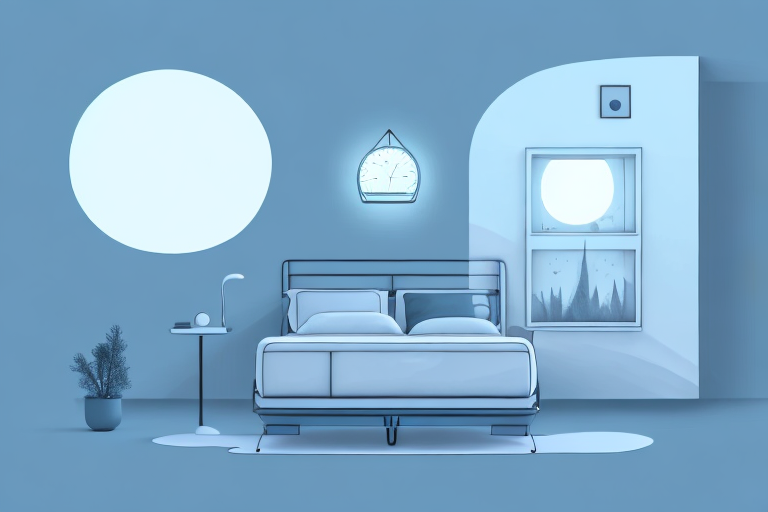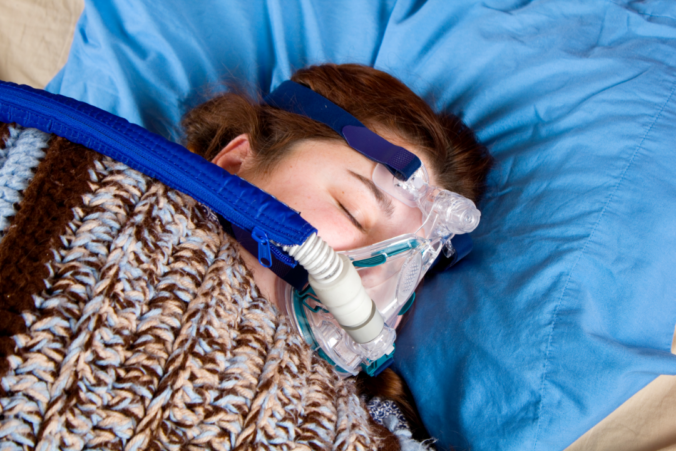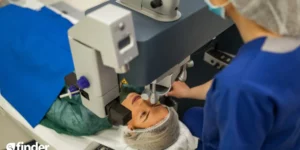Living with sleep apnea can be a challenge, but with the right treatment and equipment, managing the condition becomes much easier. One of the most common treatments for sleep apnea is the use of a sleep apnea machine, also known as a continuous positive airway pressure (CPAP) machine. However, adjusting to a new sleep apnea machine can sometimes be a daunting task. In this article, we will explore some helpful tips to ensure compliance and make the adjustment process smoother.
Understanding Sleep Apnea and Its Treatment
Sleep apnea is a sleep disorder characterized by pauses in breathing during sleep. These pauses, called apneas, can last for seconds to minutes and occur repeatedly throughout the night. Sleep apnea is typically caused by the relaxation of the muscles in the throat, resulting in a partial or complete blockage of the airway. The treatment for sleep apnea usually involves the use of a sleep apnea machine.
What is Sleep Apnea?
Sleep apnea is a serious medical condition that can have severe consequences if left untreated. It can lead to daytime sleepiness, fatigue, and even increase the risk of developing other health problems, such as high blood pressure and heart disease. It is important to understand the condition and its potential effects to appreciate the need for treatment.

The Role of Sleep Apnea Machines in Treatment
Sleep apnea machines, such as CPAP machines, work by delivering a constant stream of air pressure to keep the airway open during sleep. This continuous positive airway pressure helps prevent the collapse of the throat muscles, allowing for uninterrupted breathing throughout the night. Sleep apnea machines are highly effective in treating sleep apnea and improving sleep quality. Click here to read more about A Deep Dive into the Features of the ResMed AirSense 10.
The Importance of Compliance in Sleep Apnea Treatment
Ensuring compliance with sleep apnea treatment is crucial for its effectiveness. Compliance refers to consistently using the sleep apnea machine as prescribed by your healthcare provider. Here’s why compliance matters:
Why Compliance Matters
Consistent use of a sleep apnea machine can significantly reduce the symptoms of sleep apnea and improve overall sleep quality. Sleep apnea is a serious condition that can lead to various health complications, including high blood pressure, heart disease, stroke, and diabetes. By using the sleep apnea machine as prescribed, you are taking proactive steps to manage your condition and minimize these risks.
Moreover, compliance with sleep apnea treatment can also enhance your daily life. When you consistently use the sleep apnea machine, you are more likely to experience increased energy levels, improved concentration, and better mood throughout the day. This can positively impact your personal and professional life, allowing you to perform at your best and enjoy a higher quality of life.
Additionally, compliance with sleep apnea treatment is essential for long-term success. Sleep apnea is a chronic condition that requires ongoing management. By being compliant with your treatment, you are setting yourself up for sustained improvement in your sleep patterns and overall well-being.
Overcoming Common Compliance Challenges
Adapting to a new sleep apnea machine may present some challenges, but they can be overcome with the right approach. One common challenge is discomfort or difficulty adjusting to wearing the mask. However, with patience and perseverance, you can find solutions to make your treatment more comfortable and effective.
If you experience discomfort with the mask, it is important to communicate with your healthcare provider. They can help you explore different mask options that better suit your needs and preferences. There are various types of masks available, including nasal masks, full-face masks, and nasal pillows, each designed to provide a comfortable fit and minimize any potential discomfort.
Another common challenge is maintaining a consistent routine with using the sleep apnea machine. It can be tempting to skip a night or use the machine intermittently, especially when you feel fine. However, it is important to remember that sleep apnea is a chronic condition that requires continuous management. Consistency is key to achieving optimal results.
To overcome this challenge, it may be helpful to establish a bedtime routine that includes using the sleep apnea machine. Set a specific time each night to use the machine and make it a non-negotiable part of your sleep routine. You can also create a comfortable and inviting sleep environment that promotes relaxation and encourages regular use of the machine.
Furthermore, seeking support from loved ones can greatly enhance compliance with sleep apnea treatment. Share your journey with your family and friends, and let them know how important it is for you to use the sleep apnea machine consistently. Their understanding and encouragement can provide the motivation and accountability you need to stay compliant and prioritize your health.
In conclusion, compliance with sleep apnea treatment is vital for its effectiveness and your overall well-being. By consistently using the sleep apnea machine as prescribed, you can reduce the symptoms of sleep apnea, minimize health risks, and improve your quality of life. Overcoming common compliance challenges, such as mask discomfort and maintaining a consistent routine, is possible with patience, perseverance, and support. Remember, taking control of your sleep apnea treatment is an investment in your health and future.
Getting Acquainted with Your New Sleep Apnea Machine
When you first receive your new sleep apnea machine, it is essential to take the time to become familiar with its functions and features. This knowledge will help ensure proper usage and enhance your overall experience with the machine.
Using a sleep apnea machine can be a life-changing experience for those suffering from sleep apnea. These machines work by delivering a constant stream of air pressure to keep your airways open during sleep, preventing interruptions in breathing and allowing you to get a restful night’s sleep.
Now, let’s dive deeper into the process of unboxing your new sleep apnea machine and understanding its various functions and features.
Unboxing Your Machine: What to Expect
When unboxing your new sleep apnea machine, it is crucial to ensure that all the components are present and in good working condition. Carefully read the user manual provided by the manufacturer for instructions on setting up and operating the machine.
Inside the box, you will typically find the main unit, a power cord, a water chamber for humidification (if applicable), a mask, and tubing. Check each item to make sure there are no damages or missing parts. It’s always a good idea to contact the manufacturer if anything seems amiss.
Once you have confirmed that everything is in order, you can proceed with the setup process. The user manual will provide step-by-step instructions on how to assemble the machine and connect the tubing and mask. Take your time to ensure everything is properly connected to avoid any leaks or discomfort during use.
Understanding the Functions and Features
Take the time to explore and understand the various functions and features of your sleep apnea machine. Different machines may have different settings, such as ramp-up capabilities, humidity controls, and mask fit indicators. Familiarize yourself with these options to optimize your sleep therapy.
The ramp-up feature allows you to start the therapy at a lower pressure and gradually increase it over a specified period. This can be helpful for individuals who find it uncomfortable to start with high pressure right away.
Humidity controls are particularly useful for those who experience dryness or irritation in their airways during sleep therapy. Adjusting the humidity level can help alleviate these symptoms and make the therapy more comfortable.
Mask fit indicators are designed to ensure that your mask is properly sealed and fitted. A good seal is crucial for effective therapy, as any leaks can compromise the air pressure delivery. Pay attention to the mask fit indicator and make necessary adjustments to achieve an optimal fit.
Additionally, some sleep apnea machines offer advanced features like data tracking and reporting. These features allow you to monitor your sleep therapy progress and share the data with your healthcare provider for further analysis and adjustments.
By understanding and utilizing the various functions and features of your sleep apnea machine, you can customize your therapy to suit your specific needs and preferences, ultimately improving your sleep quality and overall well-being.
Tips for Adjusting to Your Sleep Apnea Machine
Adjusting to a new sleep apnea machine takes time and patience. Here are some tips to help you make the process smoother:
Living with sleep apnea can be challenging, but with the right adjustments and mindset, you can improve your sleep quality and overall well-being. One of the most important aspects of adjusting to a new sleep apnea machine is creating a comfortable environment.
Creating a Comfortable Environment
Ensure your sleeping environment is conducive to using the sleep apnea machine. Keep your bedroom clean, quiet, and at a comfortable temperature. A clutter-free space can help promote relaxation and better sleep. Consider using earplugs or ambient sound machines to reduce noise disturbances that could affect your sleep quality. These small adjustments can make a big difference in your ability to adapt to the machine.
Additionally, investing in a high-quality mattress and pillows can enhance your comfort and support while using the sleep apnea machine. Look for options that provide proper alignment for your spine and alleviate pressure points, allowing you to wake up feeling refreshed and rejuvenated.
Establishing a Routine
Consistency is key when it comes to adapting to a new sleep apnea machine. Establish a bedtime routine that incorporates the use of the machine. This routine will help signal your body that it’s time for sleep and make the adjustment process smoother. Stick to your routine even during weekends or vacations to maintain compliance and maximize the benefits of treatment.
In addition to using the machine consistently, it’s important to practice good sleep hygiene. This includes avoiding caffeine and stimulating activities close to bedtime, creating a relaxing pre-sleep routine, and keeping a regular sleep schedule. By incorporating these habits into your daily routine, you can optimize the effectiveness of your sleep apnea machine and improve your overall sleep quality.
Furthermore, it can be helpful to track your progress and make note of any improvements or challenges you experience along the way. Keeping a sleep diary can provide valuable insights into your sleep patterns and help you identify any adjustments that may be necessary. Discussing your observations with your healthcare provider can guide them in making any necessary changes to your treatment plan.
Remember, adjusting to a new sleep apnea machine is a process that takes time. Be patient with yourself and allow your body to adapt gradually. With perseverance and the right support, you can successfully integrate the sleep apnea machine into your life and enjoy the benefits of improved sleep and overall well-being.
Must Read:
- Why Choose the Best Laser Eye Surgery Options
- Laser Eye Surgery Sydney: A Comprehensive Guide
- Sleep Study Brisbane: Assessing Sleep Quality in Queensland
- Sleep Study Sydney: Analysing Sleep Health in New South Wales
- Sleep Apnea Machine Features: What to Look for in Your Device
Troubleshooting Common Issues with Sleep Apnea Machines
Occasionally, you may encounter some issues when using your sleep apnea machine. Here are some common problems and how to address them:
Dealing with Noise and Discomfort
If your sleep apnea machine is making noise or causing discomfort, there are several potential solutions. Ensure that all parts are properly assembled and there are no leaks in the mask or tubing. Adjusting the mask fit or using cushioning accessories can also alleviate discomfort. If noise persists, consider using a machine with noise reduction features, consulting with your healthcare provider, or contacting the manufacturer for further assistance.
Addressing Mask Fit Problems
Mask fit issues are common but can disrupt your sleep therapy. If your mask is leaking or causing pressure sores, try adjusting the straps or using a different mask size or style. Mask liners or nasal moisturizers can also help in improving comfort and reducing skin irritation. It may take some trial and error to find the mask that works best for you, so don’t hesitate to reach out to your healthcare provider for guidance.
In conclusion, adjusting to a new sleep apnea machine may require some effort and patience, but by following these tips, you can ensure compliance and make the transition smoother. Remember the importance of using your sleep apnea machine consistently, familiarize yourself with its functions and features, and address any challenges that arise. By prioritizing your sleep apnea treatment, you can improve your sleep quality and overall well-being.










